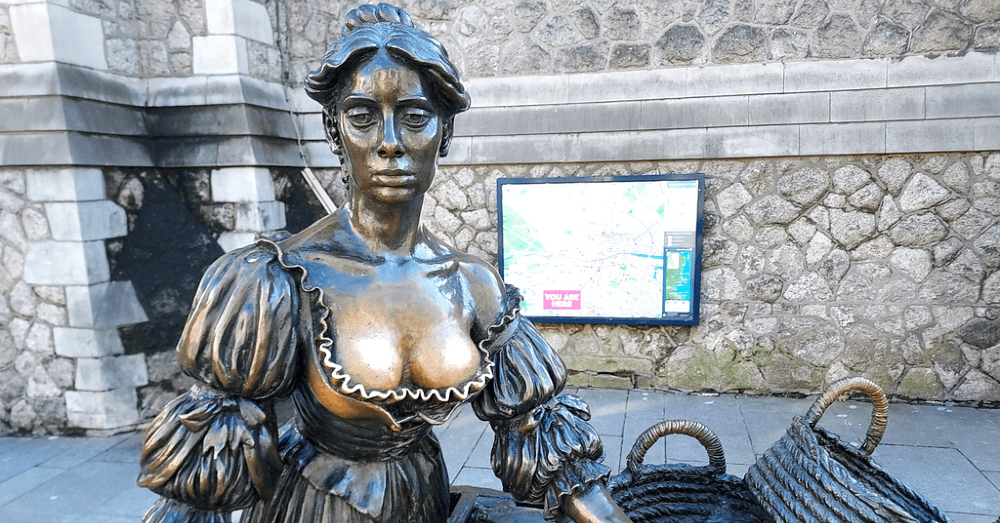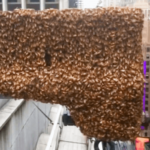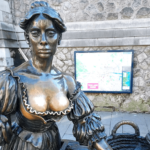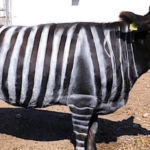
The Molly Malone statue in Dublin, Ireland, has been rubbed for good luck. After all the rubbings, it’s become obvious which part of the statue is being rubbed.
Dublin just finished fixing up the famous Molly Malone statue after tourists spent years rubbing her chest for good luck. The bronze fishmonger sculpture got so discolored from all the touching that city officials had to board it off last week for repairs. They added a fresh coating to restore the statue to how it looked when sculptor Jeanne Rynhart created it back in 1988.
When did it become ok for tourists to touch statues?
The whole “rub for luck” thing only started in 2012, apparently kicked off by some tour guide who thought it would be funny. Now it’s so common that Dublin City Council calls it “ingrained” in the tourist experience. They even tried posting wardens next to the statue in May to stop people from touching it, but the second the guards left, visitors went right back to groping the artwork.
The Dublin City Council comes up with a new restoration plan
The city’s new plan is to put flower beds around the base of the statue, which worked when they had similar problems with the Portal installation in another part of Dublin. Arts Officer Ray Yeates admits he’s not sure if planters will actually solve the problem, but they’re running out of options. The statue stands outside St Andrew’s Church on Suffolk Street, and it’s one of the most photographed spots in the city.
Why does the Molly Malone statue in Dublin need repair
The statue was created by renowned sculptor Jeanne Rynhart to offer a sculpture to honor the Irish working class. It features a woman pushing a car that would have had shellfish inside for sale. The woman wears an extremely low-cut dress, showing off the top half of her breasts. The tourist damage to the statue is around the breast area, which has turned from a dark bronze color to an almost copper color over the past several years. You can imagine that churchgoers don’t want to be reminded of an image and thought that Molly Malone was also a sex worker when they see the Suffolk Street statue on their way to church.
The tart with the cart
The Molly Malone statue is one of the most famous Dublin landmarks and has become a fun and entertaining sight for many visitors. Among Ireland’s tourist attractions, it’s one of the most popular, but it should be a little less showy and damaged from being touched. The statue was first erected on Grafton Street in 1988 but was moved to accommodate the construction of a tram line. The statue is the subject of a traditional Irish folk song that tells the story of a fishmonger’s daughter.
Would you touch the Molly Malone statue in Dublin?
Many people travel to Ireland to kiss the Blarney Stone, and why not touch Molly Malone. If her breasts are supposed to bring good luck, it makes perfect sense that they are the only part of the statue that has become damaged from touch by tourists. Still, the damage is a problem, and the city council is trying to figure out how to fix this problem. Some have campaigned for the statue to be treated with more respect, others have suggested a railing around the statue, and still others have thought that putting it on a higher plinth could be the answer. These are all good suggestions, but the most likely answer could be adding a ringed flower garden around the statue.
Could making it more risqué be the answer?
According to WWN, some have suggested recreating the statue and giving it a visible pair of nipples, which would mean lowering the top of the dress a few inches. Hopefully, this is someone poking fun at the need to restore a statue that has visible damage from being touched on the breasts. Would visible nipples bring more visitors to Dublin? Could this be problematic for more conservative tourists?
In all seriousness, the Molly Malone statue, which sits outside of a church in Dublin, is in need of restoration and protection from her breasts being touched by every tourist who visits the area. In the future, tourists might not be able to get close enough to the statue to touch it, but for now, she is still open to the public, so to speak.
This post may contain affiliate links, meaning we may earn a commission if you make a purchase. There is no extra cost to you. We only promote products we believe in.









